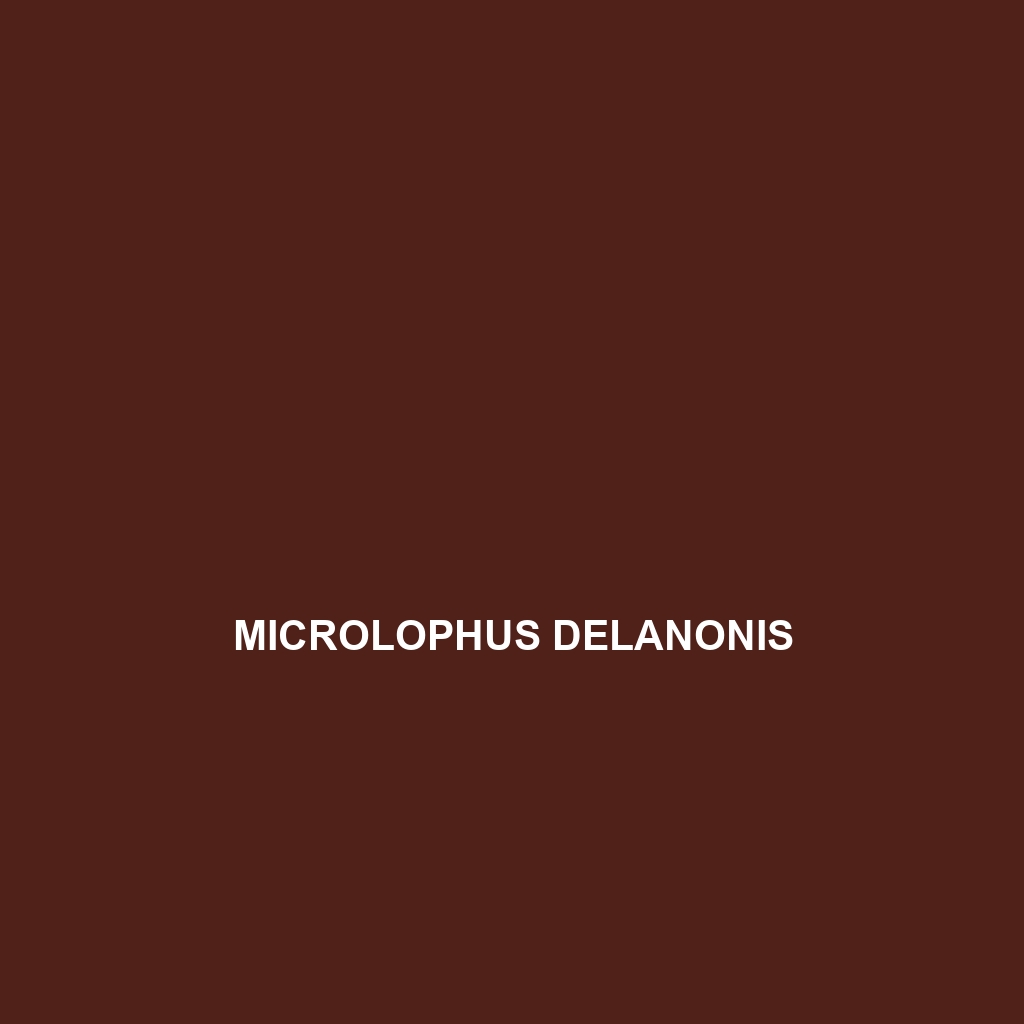Common Name
Microlophus delanonis
Scientific Name
Microlophus delanonis
Habitat
Microlophus delanonis, commonly known as the Galapagos lava lizard, is primarily found in the Galapagos Islands, which are located in the Pacific Ocean. This species prefers to inhabit volcanic landscapes, including rocky coastal areas, scrublands, and dry forests. These regions typically experience a tropical climate with minimal rainfall, creating a unique ecosystem that supports a variety of endemic wildlife. The combination of marine habitats and temperate forests provides essential resources, allowing Microlophus delanonis to thrive in this isolated environment, which is characterized by high levels of biodiversity and various microhabitats.
Physical Characteristics
Microlophus delanonis exhibits striking physical traits that facilitate its survival and camouflage. Adults typically range from 15 to 25 centimeters in length, with a slender, elongated body. The coloration of this species can vary significantly, often showcasing shades of brown, gray, and yellow with darker mottling that helps them blend into their rocky surroundings. Males are generally larger than females and display distinctive throat pouches that they can inflate during mating displays, presenting a vibrant contrast to their body coloration. Unique adaptations, such as specialized toe pads, allow Microlophus delanonis to traverse rocky surfaces with ease.
Behavior
Microlophus delanonis exhibits fascinating behaviors that are key to its survival in the harsh environments of the Galapagos. These lizards are diurnal, meaning they are active during the day and often bask in the sun to regulate their body temperature. Mating rituals often include territorial displays by males, featuring the inflation of their throat pouches and postures that assert dominance over rival males. Additionally, these lizards have been observed partaking in social interactions, often seen in small groups, which may play a role in their foraging efficiency and predator avoidance. Their ability to quickly retreat into rock crevices provides essential protection against potential threats, such as predatory birds.
Diet
Microlophus delanonis is primarily an insectivore, feeding on a diet that primarily consists of insects and small invertebrates, including ants, beetles, and spiders. Their diet may also include plant matter, ranging from leaves to fruits, which categorizes them as omnivores in certain contexts. This dietary flexibility allows them to adapt to the availability of food sources in their habitat. Their foraging behavior often involves foraging through the underbrush and rocky crevices, keenly using their quick reflexes to catch prey or evade predators.
Reproduction
The reproductive cycle of Microlophus delanonis is characterized by seasonal mating patterns usually occurring during the warmer months, when food resources are abundant. Males establish territories that they defend against competitors and perform elaborate courtship displays to attract females. Following successful mating, females typically lay clutches of 2 to 6 eggs in sandy or loose soil, where they incubate for approximately 60 to 90 days. After hatching, juvenile lizards receive little parental care and must promptly adapt to their environment to survive. During this phase, they are vulnerable to predation and environmental pressures.
Conservation Status
Currently, Microlophus delanonis is classified as Least Concern on the IUCN Red List. However, the species faces potential threats from habitat loss due to human activities, such as tourism and introduced species like rats and cats, which predate on lizard eggs and juveniles. Conservation efforts focus on habitat preservation and monitoring populations to mitigate impacts from invasive species. Education initiatives also aim to raise awareness about the importance of maintaining the unique ecosystems of the Galapagos.
Interesting Facts
Microlophus delanonis demonstrates an impressive ability for adaptation, particularly in terms of its color variation that aligns with the diverse habitats in the Galapagos Islands. These lizards have also become a subject of scientific interest due to their distinct evolutionary traits and behaviors. Interestingly, studies have shown that these lizards can change their body posture and coloration slightly in response to environmental changes, showcasing their remarkable adaptability. Furthermore, their lineage is a key example of the evolutionary processes that occur in isolated ecosystems such as the Galapagos.
Role in Ecosystem
As an integral part of the Galapagos ecosystem, Microlophus delanonis plays a crucial role in maintaining ecological balance. By preying on insects and small invertebrates, these lizards help control pest populations, contributing to the health of the ecosystem. Additionally, they serve as prey for larger predators, linking various trophic levels within the food web. Importantly, their presence assists in nutrient cycling and soil health, highlighting their significance as both predators and a source of food for other species. Such interdependent relationships contribute to the overall stability and biodiversity of their habitat.
